- Thyroid Care
- Armodafinil
- HIV Medicines
- Weight Loss
- Naltrexone
- Anti Emetic
- Neuropathic Pain
- Mens Health
- Hair Loss
- Pain Relief
- HCG Injections
- Quit Smoking
- Pharmaceutical Vaccine
- Best Selling Products
- Anti Viral
- Bimatoprost
- Antibiotics
- Women's Health
- Cetaphil
- Botulinum
- Diabetes
- Human Albumin
- Anti Malarial
- Dermal fillers
- Chemical Peels
- Nephrology Segment
- Kidney / Liver Care
- Anti Cancer
- Altus Product's
- Pharmaceutical Products
- Anti Fungal
- Hepatitis
- Beauty & Skin Care
- Asthma
- Modafinil
- Urology Segment
- Anti-Cancer
- Armodafinil
- Bimatoprost
- Botulinum
- Dermal Fillers
- Hepatitis
- Mens-health
- Modafinil
- Naltrexone
- ANTI EMETIC
- Altus Product’s
- Anti Fungal
- Anti Malarial
- Anti Viral
- Antibiotics
- Asthma
- Beauty & Skin Care
- Cetaphil
- Chemical Peels
- Diabetes
- Hair Loss
- HCG Injections
- HIV Medicines
- Human Albumin
- Kidney / Liver Care
- Neuropathic Pain
- Pain Relief
- Pharmaceutical Products
- Pharmaceutical Vaccine
- Quit Smoking
- Thyroid Care
- Weight Loss
- Women’s Health
- Thyroid Care
- Armodafinil
- HIV Medicines
- Weight Loss
- Naltrexone
- Anti Emetic
- Neuropathic Pain
- Mens Health
- Hair Loss
- Pain Relief
- HCG Injections
- Quit Smoking
- Pharmaceutical Vaccine
- Best Selling Products
- Anti Viral
- Bimatoprost
- Antibiotics
- Women's Health
- Cetaphil
- Botulinum
- Diabetes
- Human Albumin
- Anti Malarial
- Dermal fillers
- Chemical Peels
- Nephrology Segment
- Kidney / Liver Care
- Anti Cancer
- Altus Product's
- Pharmaceutical Products
- Anti Fungal
- Hepatitis
- Beauty & Skin Care
- Asthma
- Modafinil
- Urology Segment
No products in the cart.
Return To Shop$35.90 – $76.92Price range: $35.90 through $76.92
GP 1 Tablet (Glimepiride 1mg)
GP 1 Tablet belongs to a group of medicines called sulfonylureas and is used to treat type 2 diabetes mellitus in adults. It helps control blood sugar levels in people with diabetes thereby preventing serious complications of diabetes such as kidney damage and blindness.
Have questions?
Call : +91 9002 1002 33
GP 1 Tablet (Glimepiride 1mg)
| COUNTRY OF ORIGIN | India |
|---|---|
| DOSAGE FORM | Tablets |
| GENERIC NAME | Glimepiride |
| INDICATION | Treatment of Type 2 diabetes mellitus |
| PACKAGING | 10 tablets in 1 strip |
| MANUFACTURER | USV Ltd |
| COMPOSITION | Glimepiride (1mg) |
PRODUCT INTRODUCTION
GP 1 Tablet belongs to a group of medicines called sulfonylureas and is used to treat type 2 diabetes mellitus in adults. It helps control blood sugar levels in people with diabetes thereby preventing serious complications of diabetes such as kidney damage and blindness.
GP 1 Tablet may be used alone or along with other medicines. It should be taken just before or with the first meal of the day. Take it regularly at the same time each day to get the maximum benefit. Your doctor will decide what dose is best for you and this may change from time to time according to your blood sugar levels.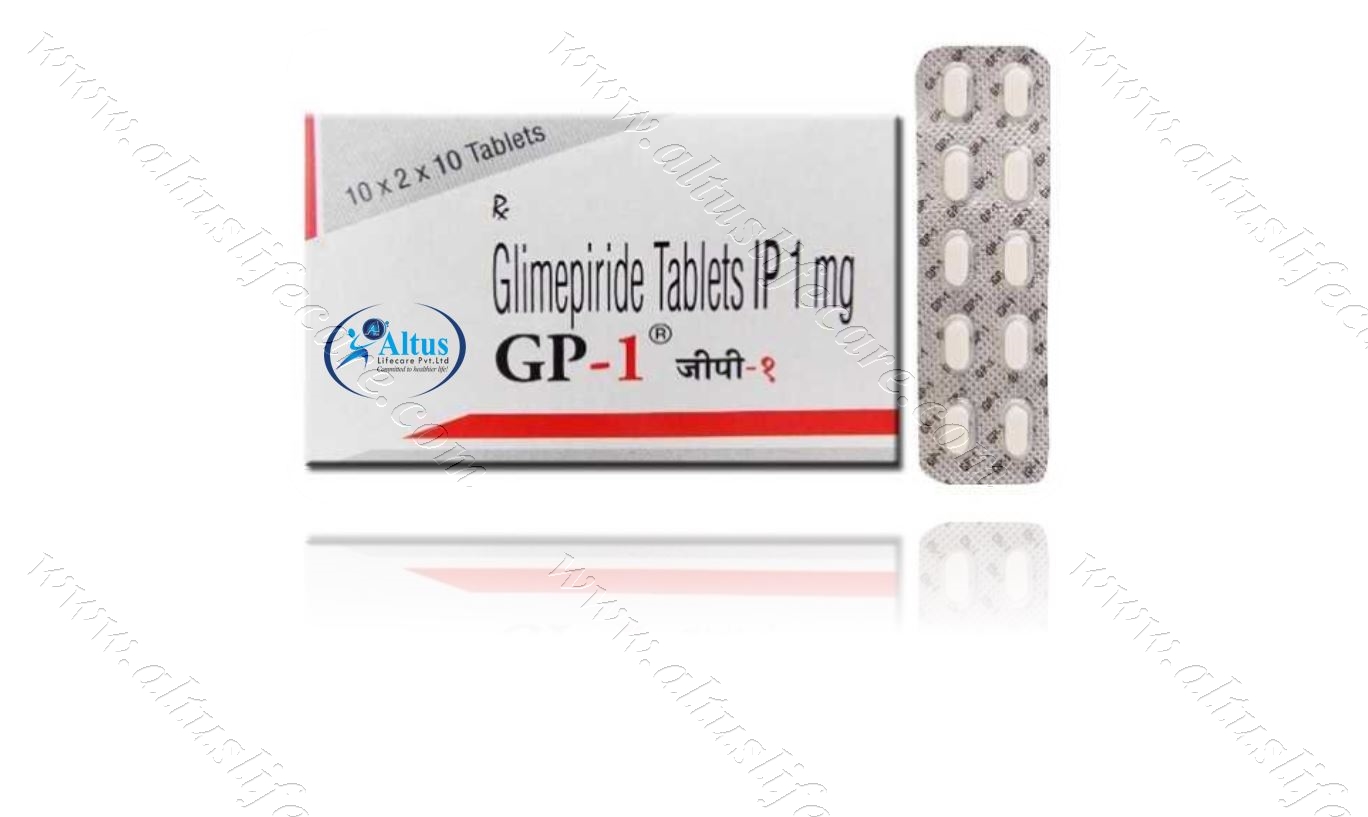
Keep taking this medicine, even if you feel well or your blood sugar levels are controlled. If you stop it without consulting your doctor, your blood sugar levels could rise to put you at risk of diabetes complications such as kidney damage, blindness, nerve problems, and loss of limbs. Remember that it is only part of a treatment program that should also include a healthy diet, regular exercise, and weight reduction as advised by your doctor. Your lifestyle plays a big part in controlling diabetes.
The most common side effects of taking this medicine include low blood sugar levels (hypoglycemia), nausea, headache, and dizziness. Make sure you recognize the signs of having low blood sugar levels, such as sweating, dizziness, headache, and shaking, and know how to deal with them. To prevent this, it is important to have regular meals and always carry a fast-acting source of glucose such as sugary food or fruit juice with you. Drinking alcohol can also increase your risk of low blood sugar levels and hence should be avoided. Some people may experience an increase in weight with this medicine.
You should not take it if you have type 1 diabetes mellitus, diabetic ketoacidosis (high levels of acid in your blood), or if you have severe kidney or liver disease. Before taking this medicine, tell your doctor if you have ever had heart disease, thyroid disease, or some hormonal conditions, as it may not be suitable. Pregnant or breastfeeding women should also consult their doctor before taking it. Your blood sugar levels should be checked regularly and your doctor may also advise blood tests to monitor your blood cell counts and liver function.
“Glimepiride Tablets and Lifestyle Modifications in Diabetes”
Addressing the symbiotic relationship between Glimepiride tablets and lifestyle modifications, this section highlights the importance of combining medication with healthy lifestyle choices. Healthcare providers can guide patients on integrating Glimepiride into a holistic diabetes management approach.
“Glimepiride and Beyond: Innovations in Diabetes Care”
This section delves into the innovative landscape of diabetes care, highlighting Glimepiride’s role in shaping advancements. By exploring how Glimepiride goes beyond conventional treatments, incorporating technological and therapeutic innovations, patients and healthcare professionals gain insights into the evolving frontiers of diabetes management.
Signs and Symptoms of Type 2 Diabetes Mellitus: Navigating Early Diabetes Warning Signs
Navigate through the early warning signs associated with Type 2 Diabetes Mellitus. Recognize the importance of identifying these signs and their role in guiding individuals toward timely healthcare intervention.
Blueprints for Better Health: Drug for Diabetes Mellitus Type 2 Odyssey
Unveiling the architectural plans for enhanced health, this odyssey explores how the drug serves as a blueprint for comprehensive solutions in Diabetes Mellitus Type 2 management, setting the stage for improved well-being.
Diabetes Mellitus Medications: Medication Strategies for a Healthier Lifestyle
Implement strategic approaches to medication use for a healthier lifestyle amidst diabetes management. This guide provides practical strategies to maximize the benefits of medications, promoting optimal living and a fulfilling lifestyle.
The Impact of Social Support Networks on Treatment of Type 2 Diabetes Mellitus
Recognizing the importance of social factors, this section explores the impact of social support networks on the treatment of Type 2 Diabetes Mellitus. By considering the influence of interpersonal relationships, the discussion aims to highlight the role of community and social connections in diabetes care.
“Meds for Diabetes Mellitus Type 2: Medication Choices for Comprehensive Diabetes Management”
Explore the spectrum of medication choices designed to facilitate comprehensive diabetes management. This guide provides insights into selecting medications that address various facets of diabetes, contributing to a holistic approach to caring for individuals with Type 2 Diabetes.
Medications for Diabetes Mellitus Type 2: Medication Adherence and Mental Health
– Mental health influences medication adherence. Explore this blog to understand the intricate connection between mental health and medication adherence, discussing strategies for fostering a positive mindset and supporting consistent medication use in individuals with type 2 diabetes.
DM Type 2 Medications: Navigating Medication Strategies for a Healthier Lifestyle
Explore effective strategies for navigating through medication options with the aim of promoting a healthier lifestyle for individuals managing Type 2 Diabetes. Understand how these strategies contribute to lifestyle improvements.
USES OF GP TABLET
- Treatment of Type 2 diabetes mellitus
BENEFITS OF GP TABLET
In Treatment of Type 2 diabetes mellitus
GP 1 Tablet increases the amount of insulin your body produces (in the pancreas). The insulin then works to lower your blood glucose level. It is usually taken once a day. You should keep taking it for as long as it is prescribed.
Lowering blood glucose levels is an essential part of managing diabetes. If you can control the level you will reduce the risk of getting any of the serious complications of diabetes such as kidney damage, eye damage, nerve problems, and loss of limbs. Taking this medicine regularly along with proper diet and exercise will help you live a normal, healthy life.
SIDE EFFECTS OF GP TABLET
Common side effects of GP
- Hypoglycemia (low blood glucose level)
- Headache
- Nausea
- Dizziness
HOW TO USE GP TABLET
HOW GP TABLET WORKS
SAFETY ADVICE

Alcohol

Pregnancy

Breast feeding
Monitoring of the breastfed infant’s blood glucose is advisable during maternal therapy with GP 1 Tab let

Driving

Kidney
Use of GP 1 Tab let is not recommended in patients with severe kidney disease. These patients can experience very low blood sugar levels which may become normal after a long time.

Liver
However, the use of GP 1 Tab let is not recommended in patients with severe liver disease. These patients can experience very low blood sugar levels which may become normal after a long time.
WHAT IF YOU FORGET TO TAKE GP TABLET?
| Pack Size | 200 Tablet/s, 300 Tablet/s, 400 Tablet/s, 500 Tablet/s |
|---|
3 reviews for GP 1 Tablet (Glimepiride 1mg)
Related products
Cimivir-L Tablet | Ledipasvir | Sofosbuvir
From: $243.59Hepcvel Tablet | Sofosbuvir 400mg | Velpatasvir 100mg
From: $205.13Decarb 500 Injection (Dacarbazine)
From: $171.43Hepcvir Tablet | Sofosbuvir 400mg
From: $153.85Temoside 100 Capsule (Temozolomide 100mg)
From: $55.84Hepcvir L Tablet | Ledipasvir | Sofosbuvir
From: $256.41Myhep Lvir Tablet | Ledipasvir | Sofosbuvir
From: $176.92People also bought
-

Benoquin 40 Cream | Monobenzone 40%
From: $154.77 -
 From: $38.38
From: $38.38 -
 From: $40.05
From: $40.05 -

Aziderm 10% Cream 15gm | Azelaic Acid 10%
From: $39.26
Our Services
Shipping
Shipping at Discounted Price
Money Returns
Return Within 30 Days
Secure Payment
Safe & Secure Payment
Support 24/7
Contact 24 Hours Day
From: $50.58


From: $91.56
- Anti-Cancer
- Armodafinil
- Bimatoprost
- Botulinum
- Dermal Fillers
- Hepatitis
- Mens-health
- Modafinil
- Naltrexone
- ANTI EMETIC
- Altus Product’s
- Anti Fungal
- Anti Malarial
- Anti Viral
- Antibiotics
- Asthma
- Beauty & Skin Care
- Cetaphil
- Chemical Peels
- Diabetes
- Hair Loss
- HCG Injections
- HIV Medicines
- Human Albumin
- Kidney / Liver Care
- Neuropathic Pain
- Pain Relief
- Pharmaceutical Products
- Pharmaceutical Vaccine
- Quit Smoking
- Thyroid Care
- Weight Loss
- Women’s Health

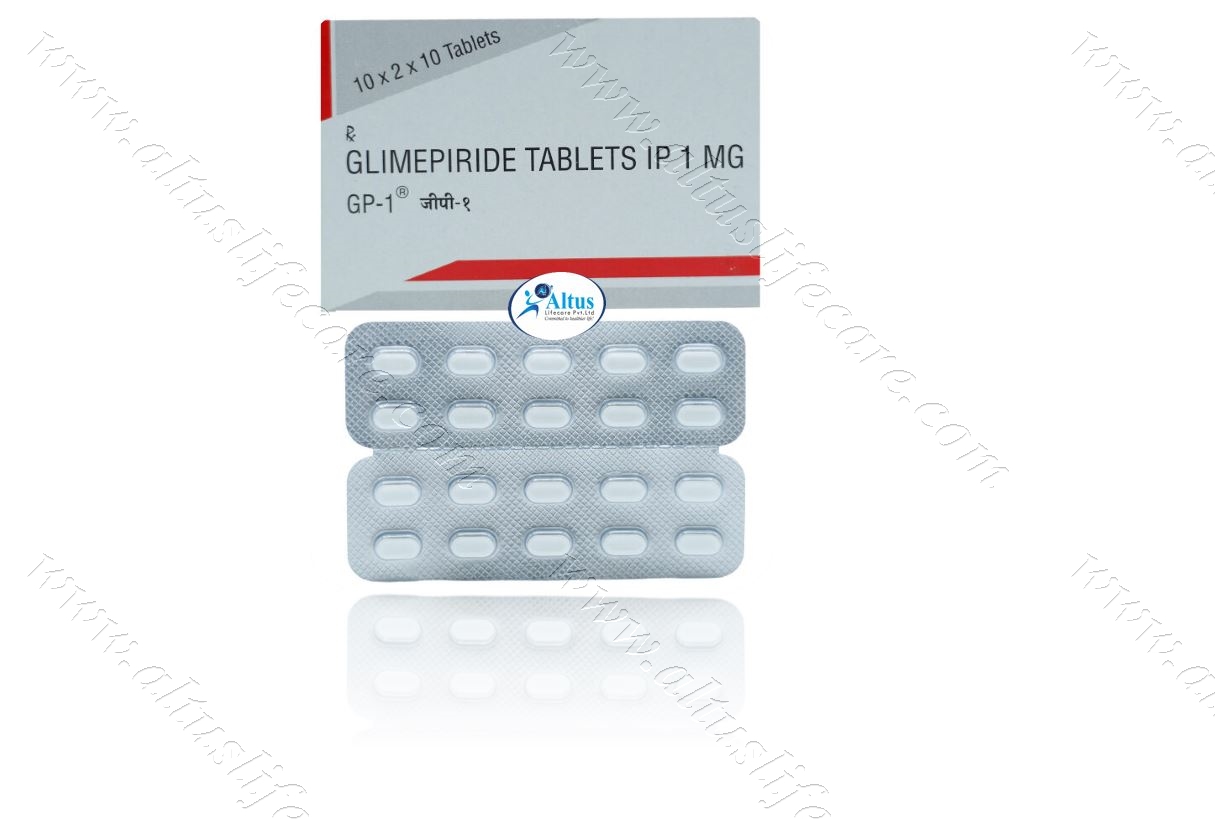
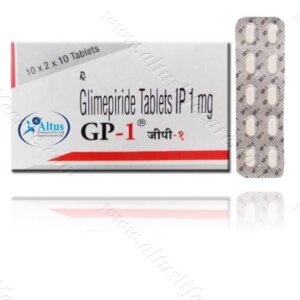
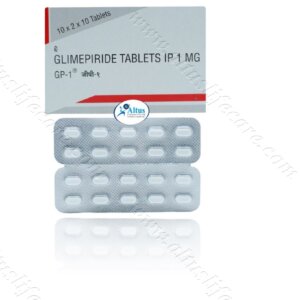
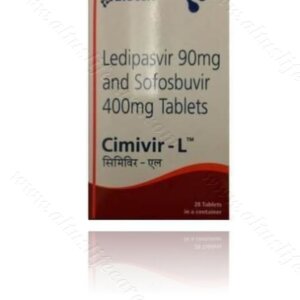
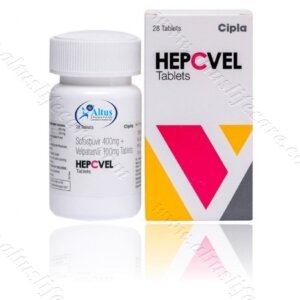
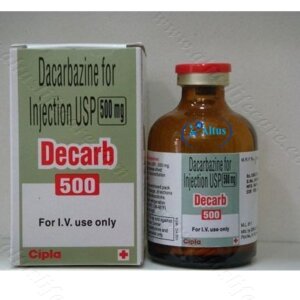
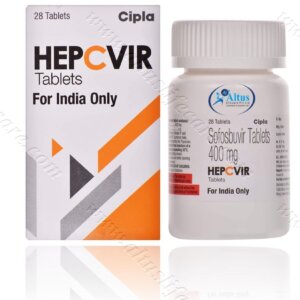

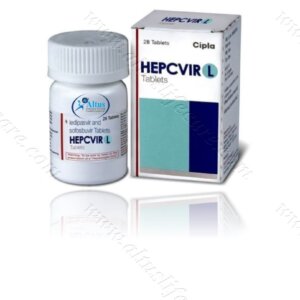
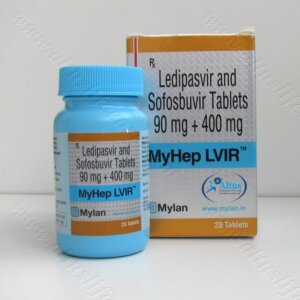


Lennon (verified owner) –
Type 2 diabetes has prompted me to prioritize restorative sleep as a fundamental aspect of overall health.
Monica (verified owner) –
“Premium product quality and lightning-fast shipping – a great experience!”
Gloria (verified owner) –
“The product quality is fantastic. The item is beautifully made and durable. The packaging was also superb, guaranteeing a safe delivery. I couldn’t be happier with my purchase.”